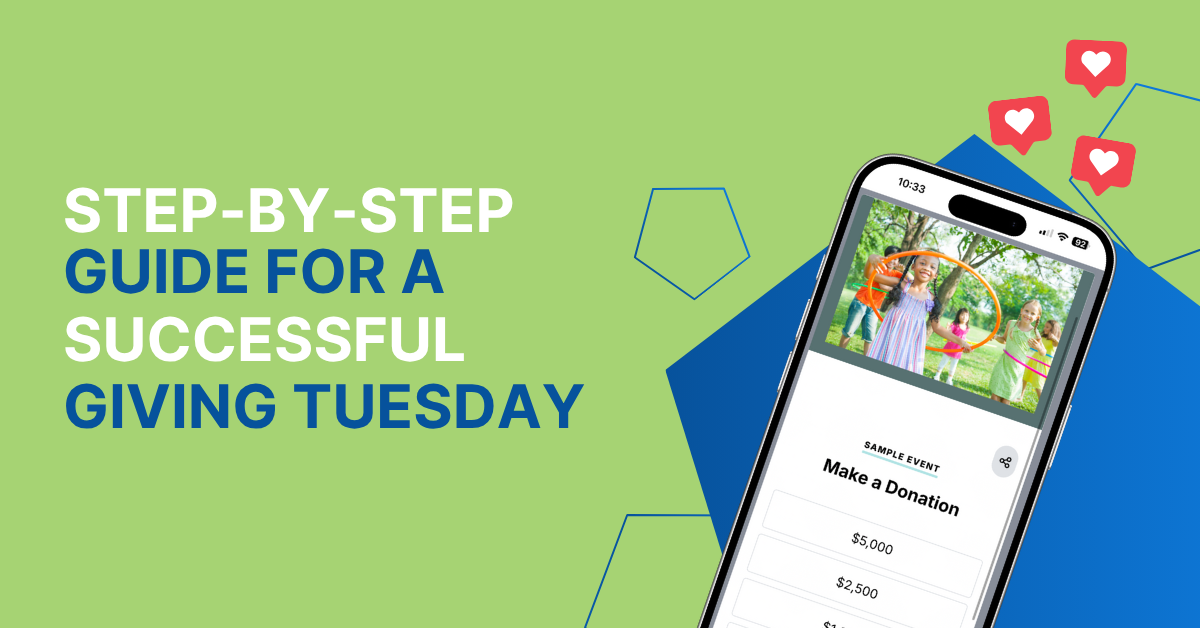
Nonprofit Image: Branding, Storytelling, and More
January 27, 2022
If you think of some of the largest nonprofit organizations across the world, you probably have a fairly clear mental image of each. For example, with the World Wildlife Fund, you might think of its iconic panda bear logo. For Susan G. Komen, you likely think of the pink ribbon that represents breast cancer awareness and the many community-building fundraisers that the nonprofit hosts. Finally, there’s the simple yet eye-catching cross logo for the aptly-named Red Cross.
The idea is that the most successful nonprofits all have one thing in common: a recognizable external image. From the fundraisers they host to how they market events and treat their supporters, these nonprofits have an image that’s consistent through all aspects of their organization.
If your nonprofit can’t say the same, it’s worthwhile to invest some time and resources into revitalizing your image in the new year. This crash course to crafting your nonprofit’s image will cover the following points:
- Nonprofit Branding
- Nonprofit Storytelling
- Tips for Crafting Your Image
Cultivating an impactful, trustworthy, and inspirational image for your nonprofit will improve your fundraising and stewardship efforts now and into the future. During times of crisis and times of good fortune, your image will keep your nonprofit afloat through the changing times.
Needless to say, it’s a worthwhile investment. Let’s get started with a discussion of one aspect of your nonprofit’s image— your branding.
Nonprofit Branding
What is nonprofit branding?
A nonprofit’s branding strategy encompasses all of the minute details of how an organization presents itself externally.
This includes visual elements, such as your logo and color scheme, as well as less tangible elements, such as your nonprofit voice and persona. This brand is carried through every touchpoint you have with supporters, including your website, your social networks, your headquarters, your event signage, and even spoken conversations such as interviews with local broadcasters.
An effective brand makes your nonprofit “recognizable” and “memorable.” It builds trust and credibility that’s essential for any nonprofit. This is because there is a gap between fundraising and when those funds actually make an impact. Your brand is what bridges that gap and helps supporters trust that your nonprofit will fulfill its promises.
How to Build Your Nonprofit’s Brand
Assemble your nonprofit’s brand elements into a set of guidelines that can be shared widely across your team. Cover the following categories:
- Positioning: This includes a discussion of your audience (constituents and supporters), your mission statement and key messaging, and your nonprofit’s external personality.
- Visual: This includes logo families, or how your logo will be shown on different platforms/sizes, your chosen typography, your color scheme (three to five primary colors, three to five secondary colors, and optional tertiary colors), and any photo and video use guidelines. Be as specific as possible— such as including the exact HEX codes for colors and providing the exact names for various fonts.
- Text: email sign-off, or avoiding the Oxford comma.
- Platform-Specific: Consider how your brand will change to adapt to different platforms, including physical signage and merchandise, printed elements such as direct mail, and online elements (your website, social networks, email, etc.). This could include only using certain logos on certain platforms, or even varying your “voice” depending on the channel (such as more formal in email and more casual on social media).
Share these guidelines widely across your team to make it as easy as possible to maintain continuity across the various outreach efforts individuals are making.
Nonprofit Storytelling
What is nonprofit storytelling?
Nonprofit storytelling encompasses the narrative that an organization tells the public about its mission and its work to advance that mission. A nonprofit’s story is a motivational tool, showing the organization’s supporters the importance of its mission and eventually inspiring those supporters to take action as well.
Storytelling and branding aren’t the same— instead, the elements are connected in the sense that your nonprofit’s story should be told in a way that aligns with your branding.
Storytelling can be utilized in a variety of contexts, including but not limited to:
- A historical retrospective on your mission and work over the years, inspiring donors and volunteers to sign-up for long-term support.
- A narrative about a specific constituent who your work has helped, shared during a virtual fundraiser to inspire a new supporter to give and enable that work to continue.
- A quick, spoken overview by a staff member at an event, with the goal of enticing a new supporter into ongoing support.
An effective story is a crucial part of your nonprofit’s outreach strategy. However, authoring one without clear guidance around how to structure that narrative will lead to an incoherent cluster of text that’s more confusing than anything.
How to Tell Your Nonprofit’s Story
There is a general process to follow when authoring your nonprofit’s story, regardless of the final format the story will take. DNL OmniMedia’s guide to nonprofit storytelling breaks these steps down as follows:
- Outline the basic arc of the narrative. This is the general path that your story will follow as it progresses— the beginning, middle, and end. In the beginning, you’ll introduce the main characters, your nonprofit, and the basic details about your mission. Your challenge will reach a peak or climax in the middle, and your nonprofit will take action against it. Lastly, the challenge is overcome at the end, and the story ends with a happy resolution. This arc informs your decisions when you begin actually writing the story, starting in the next step.
- Introduce a compelling main character. Depending on how you want to structure the narrative, this could be the constituent(s) that your nonprofit assists or a member of your community who is advancing your mission (donors, volunteers, staff members, board members). The goal is to build the story around an individual (or group) in your nonprofit’s orbit, rather than around your organization itself. This adds a human element to the story.
- Explore the conflict. This conflict will be closely related to your nonprofit’s mission, such as a food bank discussing the challenge of food insecurity in a specific geographic area. Provide context around why this challenge is so pervasive and important to combat. Who is impacted by the conflict? How are they impacted? For example, the food bank might discuss hundreds of children that only eat one meal per day— the lunch provided by their educational institution.
- Provide a solution to the problem. Discuss how the combined efforts of your nonprofit and its supporters have led to a solution to your main conflict. Emphasize that your nonprofit isn’t able to do this work independently— your supporters and their time and donations are what push any efforts across the finish line.
- Invite supporters to join in on the solution. Lastly, give supporters an actionable next step. This could be signing up for an event or a few volunteer shifts, making a donation, or even taking direct advocacy action.
These general steps will work regardless of whether you’re writing a comprehensive narrative that encompasses all of your nonprofit’s efforts or if you’re simply having a quick conversation with a prospective supporter. Scale the details you include to match the situation accordingly.
Wrapping Up: Final Tips for Crafting Your Image
Together, your nonprofit brand and story combine to make your external image. Because it’s essential to get these elements correct, let’s conclude this piece with a few final tips to create an effective image for your nonprofit:
- Work with a nonprofit marketing consultant. A nonprofit marketing consultant can help you create your branding and storytelling materials and carry that image throughout your various marketing campaigns. Review DNL OmniMedia’s guide to nonprofit marketing consulting to learn more.
- Recognize that these elements go beyond outreach materials. Your nonprofit’s image is reflected in conversations your staff members have with supporters, the reputations of your board members and top leadership, and even the internal organizational culture you create with how you manage volunteers. Ensure all of your team members are familiar with your external image and prepared to uphold it in their activities as a representative of your nonprofit.
- Prioritize creating an image that’s timeless. Avoid incorporating what’s currently trending into your nonprofit’s branding and story. Trends change on a daily basis and the last thing you want is for your image to grow stale in a week’s time.
By elevating your nonprofit’s branding and storytelling, you’ll improve your nonprofit’s image in the short term and well into the future. It’s a worthwhile investment, and with these tips, you’ll be off to a great start.
Get The Latest Updates
Subscribe To Our Monthly Newsletter
No spam, notifications only about new products, updates.
Become a subscriber
Subscribe to our blog and get the latest updates straight to your inbox.

